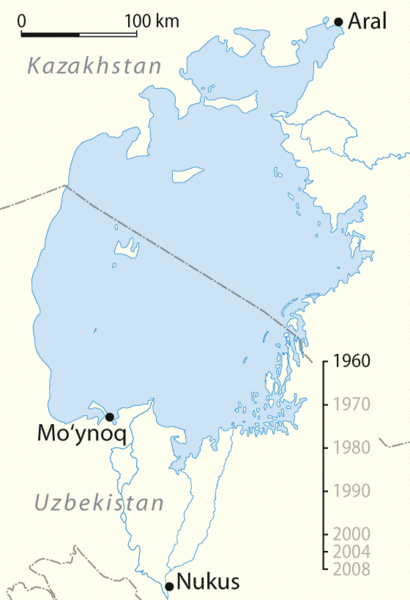Enjoli Liston reports on the former body of water in the Guardian:

The Aral Sea in 2000 on the left and 2014 on the right. Photograph: Atlas Photo Archive/NASA
A large section of the Aral Sea has completely dried up for the first time in modern history, according to Nasa.
Images from the US space agency’s Terra satellite released last week show that the eastern basin of the Central Asian inland sea — which stretched across Kazakhstan and Uzbekistan and was once the fourth largest in the world — was totally parched in August. Images taken in 2000 show an extensive body of water covering the same area.
“This is the first time the eastern basin has completely dried in modern times,” Philip Micklin, a geographer emeritus from Western Michigan University told Nasa. “And it is likely the first time it has completely dried in 600 years, since Medieval desiccation associated with diversion of Amu Darya to the Caspian Sea.”
Note that this isn’t primarily due to climate change, although it is a man-made environmental disaster:
In the 1950s, two of the region’s major rivers — the Amu Darya and and the Syr Darya — were diverted by the Soviet government to provide irrigation for cotton production in Uzbekistan and Turkmenistan, starving the Aral. It has been diminishing ever since, with the sea level dropping 16 metres between 1960 and 1996, according to the World Bank. Water levels are believed to be down to less than 10 per cent of what they were five decades ago.
Wikimedia has a dramatic illustration of the diminishing border of the Aral Sea between 1960 and 2008:




